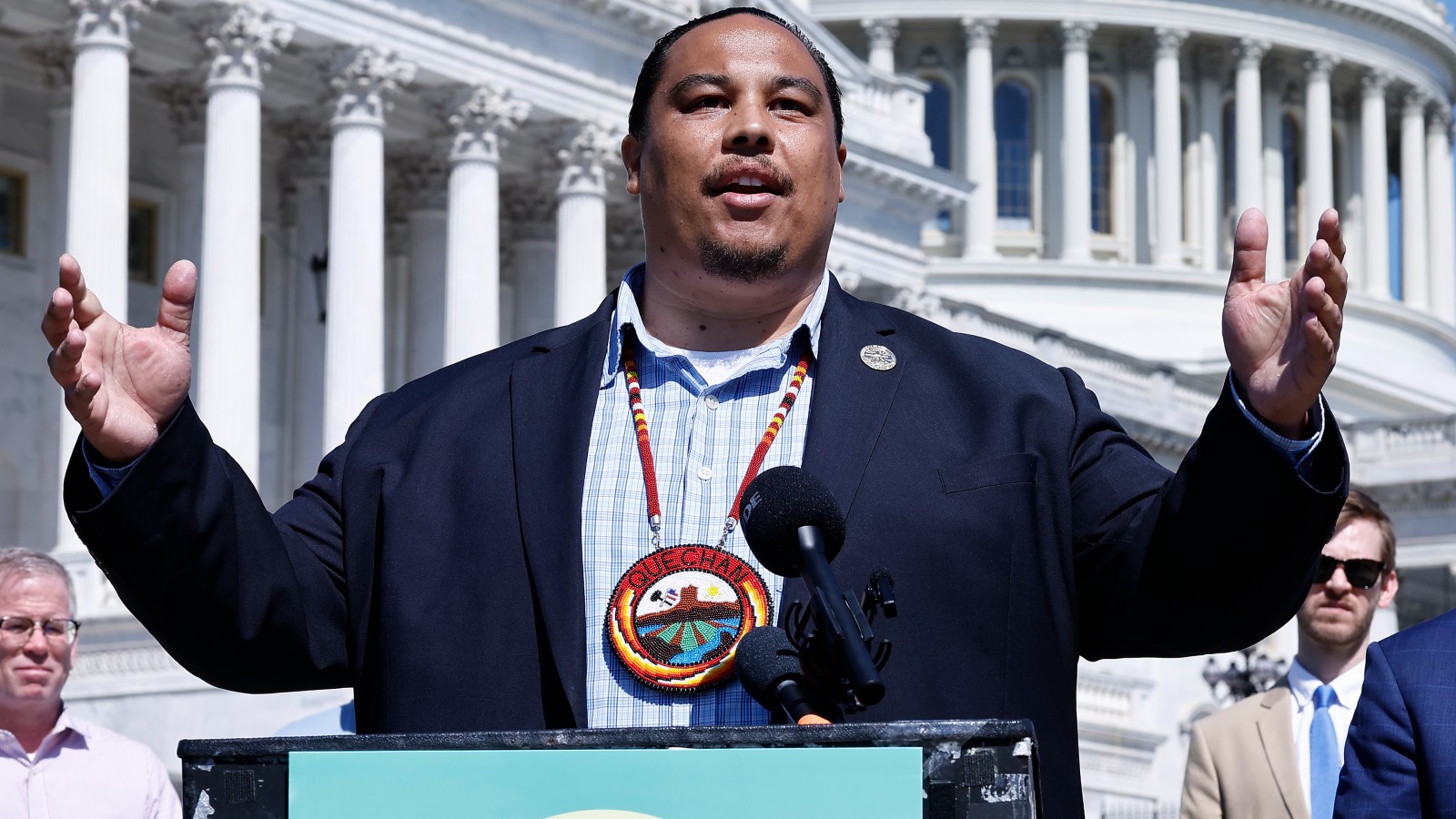This week, representatives of the Fort Yuma Quechan Indian Tribe and the Pit River Nation used the 16th United Nations Conference on Biological Diversity, or CBD, in Cali, Colombia, to champion the creation of the Kw’tsán National Monument, the Chuckwalla National Monument, and the Sáttítla National Monument. The proposed move would protect around 1 million acres in California from extractive industries like mining, oil, and gas. With the U.S. presidential election less than two weeks away, California tribes are pushing the Biden administration to designate these three national monuments before a new, possibly unfriendly or uninterested administration, takes office.
Lena Ortega of the Fort Yuma Quechan Indian Tribe in the southern tip of California said that in the proposed Kw’tsán National Monument, animals like bighorn sheep and desert tortoises live amongst the Ocotillo, a cane-like semi-succulent, as well as sandfood, a fleshy parasitic plant that grows nowhere else.
“The motto for this year is ‘Peace With Nature,’” she said of the CBD meeting. “Well, we’ve always had peace with nature. We are one with the land and one cannot be separated from the other and still be healthy.”
Tribes are better at protecting biodiversity because of the long relationships they have on the land. This year, from the online research journal One Earth, researchers found when Indigenous people and local communities were meaningfully brought in, and are not treated simply as stakeholders, ecological goals had more favorable outcomes. Brazil has given around 800 square miles back to Indigenous peoples in the Amazon and the government also banned non-Indigenous people from engaging in economic activity within these lands. Brazil still weakened environmental protections that contribute to the continued deforestation of the land, but that’s happening alongside Indigenous sustainable hunting and gathering practices that have been shown to be effective for conservation goals as well.
“Landback is the ultimate goal,” Ortega said, “but this is a first step.”
If approved, the three national monuments would contribute to the state of California’s 30×30 biodiversity goals — part of an international effort to protect 30 percent of land and coastal waters by 2030. Part of that strategy is asking governments to create national monuments. And while 30×30 goals indicate wanting to hold the world accountable, Indigenous peoples from across the world point out that they have been, in many cases, violently removed from their lands, had resources seized, and excluded from decision making. The Biden administration has indicated its interest in addressing this history — hiring the first Indigenous cabinet secretary, Deb Haaland, and encouraging federal departments to respect tribal sovereignty are some examples. These new national monuments would help the U.S. reach its 30×30 goal by listening to tribes.
National monuments are created under the Antiquities Act of 1906 and allow presidents to unilaterally create protected areas on federal public lands. Tribes have utilized this power to protect important historical and sacred sites for decades, and just this year, in California, the Biden administration added around 14,000 acres of land to the Berryessa Snow Mountain National Monument and 100,000 acres to the San Gabriel Mountains National Monument.
Tribes in relationship with lands and waters protected under a national monument can enter into a co-steward agreement with the federal government to continue practicing traditional ecological knowledge to protect their homelands: deals between tribal nations and federal authorities that detail how parties will preserve public lands and resources. However, federal authorities have the final say.
While protecting land through the establishment of national monuments is a tool tribes can use, it’s not infallible. In Utah, the Hopi, Zuni, Ute Mountain Ute, Diné, and Ute make up the Bears Ears Inter-Tribal Coalition, the entity that pushed for Bears Ears National Monument. In 2016, President Obama established it, but a year later, President Trump reduced it by 85 percent, leaving the area open to extractive industries.
In 2021, Biden established the monument again and the Bureau of Land Management and the U.S. Forest Service formalized management responsibilities to co-steward the land using traditional Indigenous knowledge — sets of unique, culturally-informed information on how to best steward the land with other tribes.
A report from the Swedish University of Agricultural Sciences, tabulating international data over three decades, indicates that having Indigenous peoples as stewards of the land keeps forests healthy, which helps mitigate climate change. This intimate knowledge of ecology and local governance — that often spans beyond written history — leads to decisions like planting more trees and halting deforestation.
Brandi McDaniels is a member of the Pit River Tribe in Northern California, and spoke at CBD about the Sáttítla National Monument campaign. The proposed national monument would span the Shasta-Trinity, Klamath, and Modoc National Forests. Around two dozen geothermal development projects have been leased on these lands, and McDaniels hopes to protect the area from further development.
“These lands have been taken away from our tribes,” she said. “They’ve been mismanaged.”
This year, CBD is focused on money and aims to “support resource mobilization and alignment of financial flows” to protect the world’s limited biodiversity. In 2019, experts found that the planet needs around $700 billion to protect the world’s forests, plains, and wildlife. Conservation efforts are primarily non-Native led, and as of 2022, only 17 percent of funding goes to Indigenous peoples.
Correction: An earlier version of this story misspelled “Colombia.”




